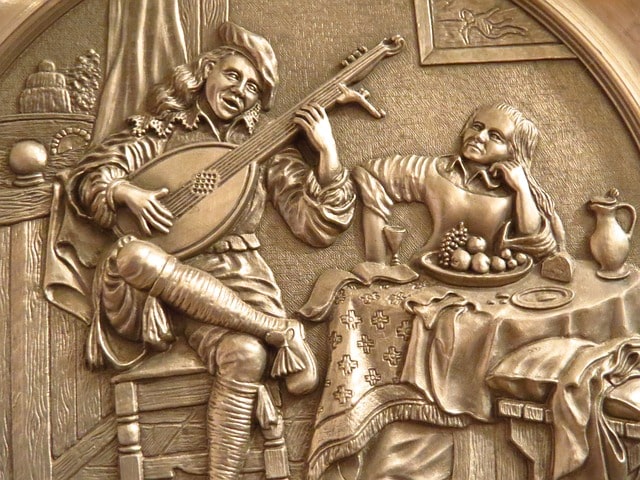
The minstrels were traveling artists.
The notion of minstrelsy dates back to the Middle Ages . This is the name given to someone who went from town to town reciting, singing, dancing or entertaining people . Minstrels could even perform before nobles and monarchs.
Minstrels, therefore, were traveling entertainers . They generally displayed their talent in the squares, performing in exchange for food or money . In some cases, kings hired them to entertain banquets and celebrations. Minstrels could travel alone or join caravans of fairgrounds.
Minstrels and troubadours
There were various kinds of minstrels. Many dedicated themselves to interpreting the compositions of the troubadours , who were the creators of the works . There were also minstrels who were imitators or illusionists.
The difference between troubadours and minstrels, in this way, lies in authorship. Troubadours wrote texts and composed music , focusing on themes such as heroic legends and the adventures of knights. The minstrels, on the other hand, usually limited themselves to memorizing these works and reciting them in front of the public.
The concept today
During the Middle Ages there were minstrels throughout the European continent. That is why the presentations took place in different languages and dialects.
Nowadays there are no minstrels in the same sense as in medieval times, although there are artists who carry out similar work . Street artists who, at the end of their performance, pass a cap to collect contributions from their audience, can be considered modern minstrels, especially if they travel to different locations to perform their show.

With their activity, the minstrels contributed to the preservation and dissemination of the culture of their time.
Types of minstrels
As mentioned in previous paragraphs, the work of the minstrel was varied since his shows could include literature, music, recited stories, games or even acrobatics. Depending on the activity they focused on, we can distinguish different types of minstrels:
* lyricists : they were those who dedicated themselves to reciting the lyrical works that the troubadours composed;
* epic : they performed various narrative compositions, such as epic songs;
* imitators : they focused mainly on imitations;
* goliards : these were homeless clerics or students with poorly ordered lives;
* zaharrones : these minstrels dressed up and made grotesque gestures in their presentations;
* harvesters : they were conjurers, that is, they did certain tricks mainly based on sleight of hand;
* minstrels : unlike other types of minstrels, these did not move from one place to another but rather served a lord exclusively. His main activity was music;
* cazurros : this type of minstrels did not follow any rules, but rather their recitals could be described as "nonsense";
* minstrels and soldiers : these were women who danced and sang in public and led a life considered wandering.
This classification is not complete, but rather brings together the main types of minstrels in broad strokes. For example, if we wanted to delve deeper into the differences we could talk about voice minstrels and instrument minstrels, who included singing or musical instruments in their performances, respectively. Among the most common instrumentalists were the cedar players, the viola players, the tromper players and the drummers.
Preservation and dissemination of culture
The minstrels collaborated with the preservation of a treasure of incalculable value that they transmitted orally and that probably extends from medieval epic poetry to pre-Renaissance courtly poetry. Many of the minstrels offered their shows for free and among the works they performed we can highlight four songs from Castilian tradition that appeared frequently: Cantar del mio Cid; Legends of Count Fernán González; Song of Zamora History of the seven infants of Lara.
The resources that the minstrels used to attract the attention of their audience were appealing formulas directed at them ( listen, I will tell you, know ), division of the work into several parts and the use of subjective evaluation.
